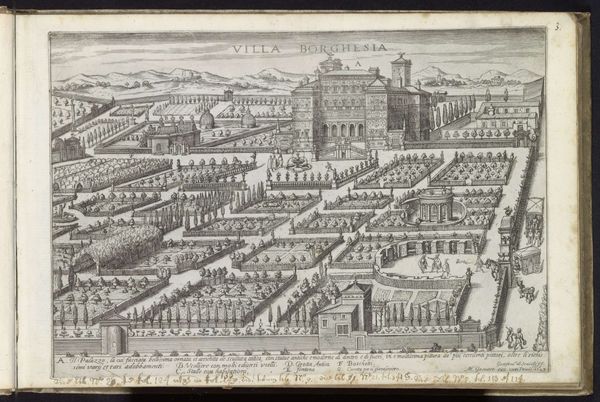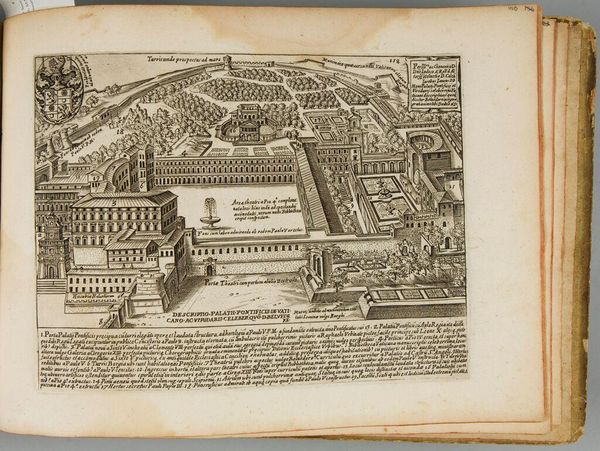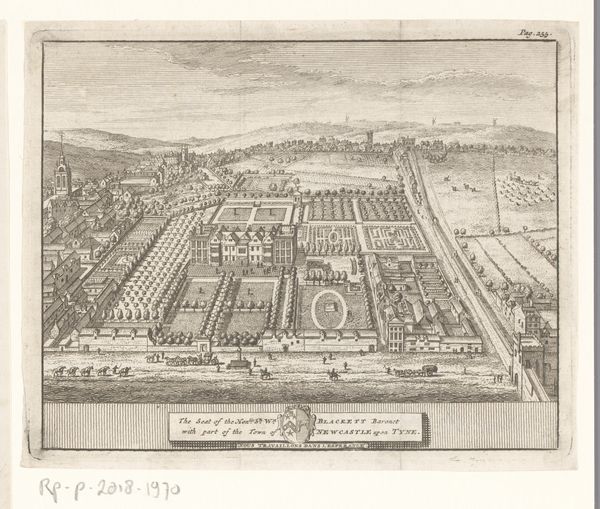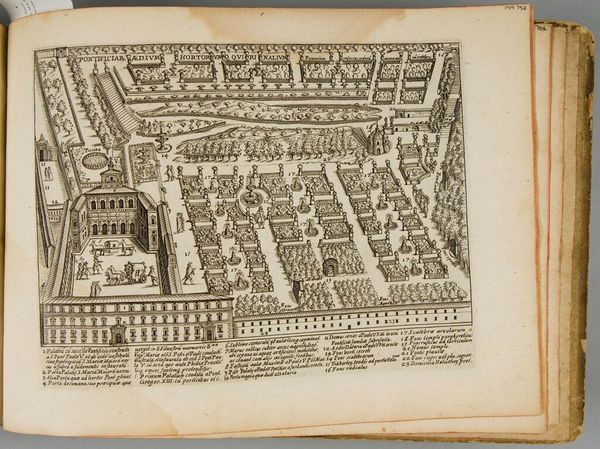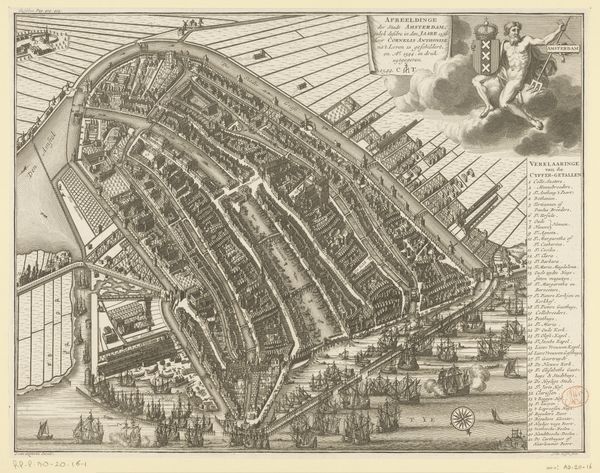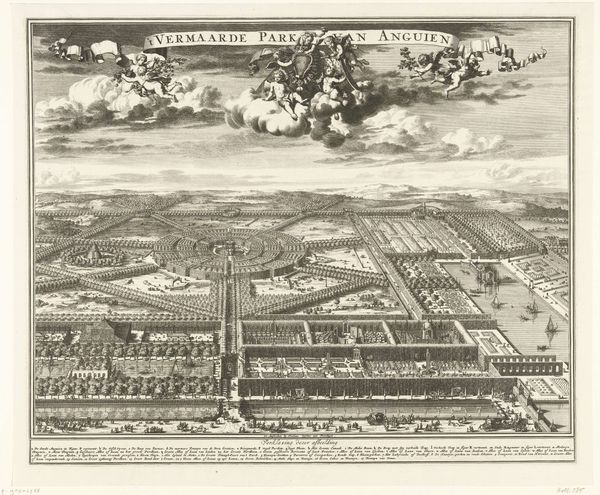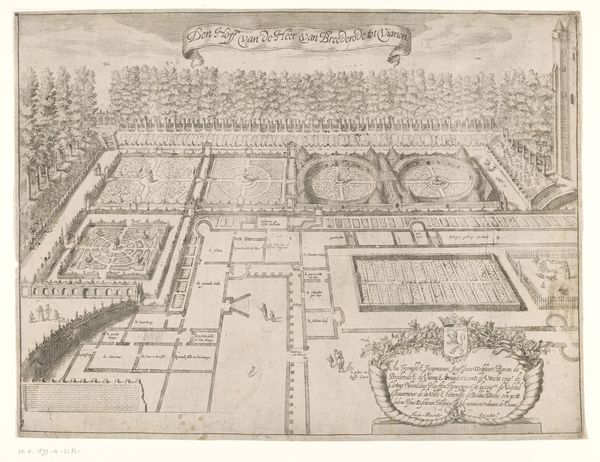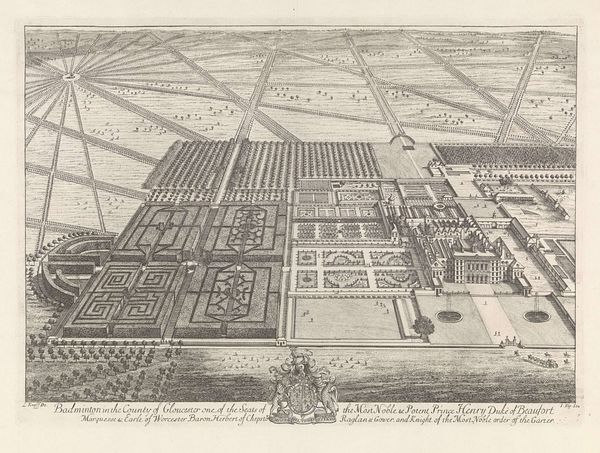
print, engraving, architecture
#
garden
# print
#
landscape
#
geometric
#
line
#
italian-renaissance
#
engraving
#
architecture
Dimensions: height 240 mm, width 350 mm
Copyright: Rijks Museum: Open Domain
This is Francesco Corduba's depiction of the Villa d'Este in Tivoli, rendered through the precise lines of an engraving. Observe how the gardens are meticulously laid out, a testament to the Renaissance desire to impose order on nature. The maze, or labyrinth, stands out. A complex network of paths designed to confuse and disorient, mazes have appeared throughout history, from ancient Crete to the gardens of Versailles. In classical mythology, the labyrinth held the Minotaur, a symbol of our deepest, most irrational fears. The Villa d’Este maze, while playful on the surface, may allude to these darker associations, reflecting the complex interplay between reason and the subconscious. Such symbols resonate on a deeper level. The maze embodies a timeless human experience: the search for meaning, the struggle against confusion, and the confrontation with the unknown. Like the twists and turns of the labyrinth, our lives are journeys filled with challenges and choices, where the path forward is not always clear. This engraving reminds us that, even in the most meticulously designed environments, the human psyche remains a wilderness of its own.
Comments
No comments
Be the first to comment and join the conversation on the ultimate creative platform.

